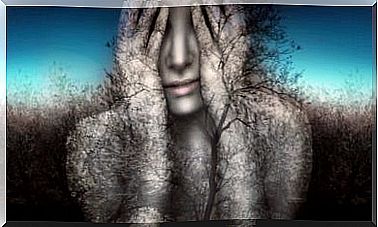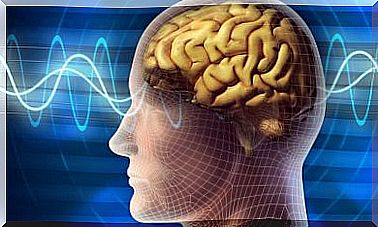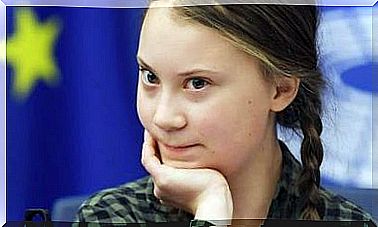Beyond Schizophrenia: Psychotic Disorders

Contrary to popular belief, within the framework of psychotic disorders, people with schizophrenia are not a homogeneous group. Furthermore, the disorders usually present a homogeneous group of symptoms. In the case of schizophrenia, this is not quite the case.
No symptoms of schizophrenia are pathognomonic. This means that there is no main symptom that is the essence of said condition. For this reason, more than schizophrenia, we should speak of schizophrenias.
There are also other psychotic disorders apart from schizophrenia. In this article those sometimes blurred by the shadow of schizophrenia are presented.
Psychotic disorders: beyond schizophrenia
Within the DSM-5, the psychological formulary, the spectrum of schizophrenia and other psychotic disorders – in addition to schizotypal personality disorder – are collected in the same section. They are grouped together because they are defined by some abnormality defined by: delusions, hallucinations, disorganized thinking, highly disorganized motor behavior, and negative symptoms.
These conditions are listed below under psychotic disorders.
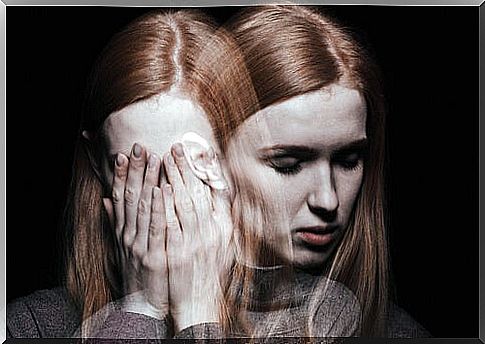
Schizoaffective Disorder: The Hybrid Disorder
Schizoaffective disorder is defined by manifesting characteristics of both a mood disorder and schizophrenia. In addition to the presence of a mood disorder – such as major depression – there have been delusions or hallucinations for at least two weeks.
It is important to say that these psychotic symptoms have appeared at some point without affective symptoms, since if not, we would be talking about a mood disorder with psychotic symptoms, and not a schizoaffective disorder.
Affective disorder usually appears in the middle period of psychotic disorder. Although schizophrenia by itself can lead to a deterioration of the person’s work, social and affective areas, and therefore affect their mood, the affective part of schizoaffective disorder is usually more intense and more chronic.
While in schizoaffective there is usually an environmental stressor that motivates the appearance of the condition, in schizophrenia there are usually no stressors or family history.
Delusional disorder: delirium as the only symptom
Delusional disorder presents one of the positive symptoms that can appear in schizophrenia: delirium. These people often have a very persistent belief that is contrary to reality. They usually do not have other symptoms related to schizophrenia.
It is relevant to note that the ideas that are presented in delusional disorder are not strange or at least not as strange as in schizophrenia. The imagined events could happen, but in reality they are not happening. However, although not strange, delirium is very persistent and intrusive.
In addition, as far as possible, they are people who can lead a normal and adapted life. Depending on the delusion, his behavior may or may not be included in his daily life. Some go undetected with delusional disorder for many years because it does not affect their functioning.
In addition, there are no extravagant behaviors, no hallucinations or alterations in affectivity or language – as if it occurs in schizophrenia.
An example of delusional disorder can be persecutory or zealotypical — a man who believes that his wife is being unfaithful to him, even though that is not happening and there are no clues that lead him to think that this is so. Erotomanic delusional disorder is the belief that a person is in love with the person with the condition, for example.
Brief psychotic disorder – lasts only one month
This psychotic disorder is characterized by an acute onset. This means that unlike schizophrenia, there is a clear moment of onset of the condition.
You have at least one of the positive symptoms of schizophrenia : delusions, hallucinations, disorganized thinking or behavior, or catatonia. What is truly characteristic of this disorder is that it lasts less than a month and more than a day. There are brief psychotic disorders that have lasted a week, and others that have lasted two.
In addition, there is usually a psychosocial stressor, and therefore it is a condition that should arise shortly after that stressor takes place. It can also start in the puerperium, that is, after delivery. The person’s functioning after Brief Psychotic Disorder is usually the same as premorbid.
Shared psychotic disorder: folie a deux
Shared psychotic disorder refers to the delusional disorder that arises in a person from the delusional disorder or schizophrenia of their partner – or family member. Usually one member of the couple suffers from delirium, and the other member assumes with great strength the delusions of the person.
You become psychotic as a result of sharing those ideas. This is similar to what happens in many sects. People who are usually induced from the primary case to delirium, are characterized by being vulnerable, influenced or isolated from their environment. Treatment of the induced person normally involves separating him from his partner.
Schizophreniform Disorder: Mild Schizophrenia
Schizophreniform disorder is often defined as mild schizophrenia, since it presents identical manifestations to this. One of the aspects that changes refers to the duration of the disorder, since it lasts less than six months, so that a diagnosis of schizophrenia cannot be made.
In addition, it usually has an acute onset, that is, very marked. The symptoms end up disappearing before six months naturally.
On the other hand, in schizophreniform disorder the diagnostic criterion of deterioration is not established on a day-to-day basis. Therefore, people with this condition can maintain good social, work and affective functioning.
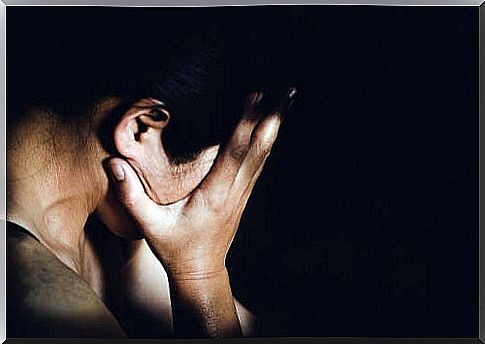
Catatonia: strange motor skills
Catatonia sometimes does not figure within the persistent psychotic disorders, but as a syndrome due to multiple causes. This symptom is also found in the different psychotic disorders, which are equally defined, although all may or may not present catatonia.
Catatonia is defined by the presence of three or more — out of twelve — psychomotor symptoms. These symptoms can stem from a medical or mental condition. The motor response can range from a total lack of response — stupor — to severe agitation. This agitation can be simple or involve peculiar motor behaviors, such as stereotypes.
Some of these motor symptoms are: stupor, catalepsy —the impossibility of contracting the muscles—, waxy flexibility —the limbs of the body are kept in forced postures—, mutism, echolalia, echopraxia or mannerisms.
Schizotypal Personality Disorder: Eccentricity
Although it is not a psychotic disorder, but a personality disorder, it is important to include it here since its diagnosis can be confused with that of schizophrenia or one of the psychotic disorders previously described.
Personality disorder is a dominant pattern of social and interpersonal deficiencies that is manifested by acute distress and poor ability to relate. They have cognitive and perceptual distortions, and behavior. It looks a lot like the premorbid phase, or first phase, of schizophrenia.
Some of the distortions they present are: strange beliefs such as clairvoyance, telepathy or sixth sense beliefs ; magical thinking, ideas of reference, bodily illusions … Furthermore, his speech is strange: it is vague, metaphorical, or excessively elaborate. They also exhibit paranoid ideas and eccentric behaviors.
They are usually people with little social support. They go to therapy for a clinical picture of depression or anxiety, but they do not usually do so because of the personality disorder itself. It is important to remember that they do not have delusions or hallucinations, although some symptoms may coincide with the onset of schizophrenia.
Within psychotic disorders, much less common psychotic conditions such as Capgras syndrome or Clérembault syndrome can also be found .
However, the range of major psychotic disorders other than schizophrenia must be kept in mind before making a diagnosis. The times, as well as the presence of negative symptoms, play an essential role that no professional should ignore.
